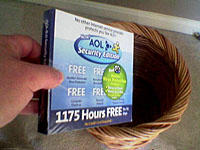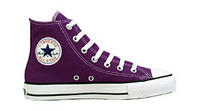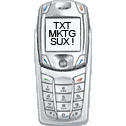Leavin' and Teachin'
 What's scarier? The ghosts and ghouls of Halloween, or spending 12 hours on a plane?
What's scarier? The ghosts and ghouls of Halloween, or spending 12 hours on a plane? Okay, let's face it. The marathon flight wins! Mine will be made worse by the fact that I could only get coach class and an aisle seat on a packed flight tomorrow. <:-0 Cue the Psycho music and a scream of terror! At least it isn't a middle seat!
Your pity will end as I state that I'm leaving for Honolulu, where I'll be teaching a User Experience Intensive at the University of Hawaii. The courses are a part of the University's Extension Certification program in Web Design. I'll be filling in for my buddy, the highly esteemed Kelly Goto.
While it will be nearly impossible to fill her shoes, looking forward to combining much of her wisdom and my own knowledge, to present material from Kelly's internationally best-selling book, "Web Re-Design: Workflow that Works". Here's an overview of the Intensive:
User Experience Intensive
The University of Hawaii has a rich tradition of bringing in strong faculty from respected companies like Adobe and Macromedia to support these extension programs. The course work is highly interactive and tailored to meet the needs of the students who attend -- and, of course, it's in Hawaii! Who wouldn't want to go? Consider it for the future! For more information, on the web certification program, click here.
Lesson from an Indian Chef
 I love my neighborhood. It's simple and interesting. While it hasn't arrived yet, it has the potential for great charm. Within a half mile of my house there's quite a cadre family owned restaurants. They are, like my neighborhood, simple and culturally diverse: Peruvian, Salvadorian, Thai, Iranian, Persian, Mediterranean, Korean, Italian, Afghani, Vietnamese can all be found within a stone's throw.
I love my neighborhood. It's simple and interesting. While it hasn't arrived yet, it has the potential for great charm. Within a half mile of my house there's quite a cadre family owned restaurants. They are, like my neighborhood, simple and culturally diverse: Peruvian, Salvadorian, Thai, Iranian, Persian, Mediterranean, Korean, Italian, Afghani, Vietnamese can all be found within a stone's throw.In this day of homogenized experience, theme parks, strip malls and chain restaurants, I love the culinary mix I find here. I also love the people I encounter. Seeing these family-owned businesses in action is a joy. Over the years, I have watched teens grow up behind the counter and move on to college. I have come to recognize the regulars - family and friends of the owners - who drop in for meals and banter. Supporting my local cafes and restaurants makes me feel more connected to my community, and it's an all around good experience.
Yesterday's experience was a particularily good one. After skipping breakfast and lunch, my stomach was growling horribly. I decided to walk down to the newly opened "Bombay Cafe", which had taken over space formerly inhabited by an internet cafe.
I was curious to see what they'd done with the place, and at first glance, it was unimpressive. The space looked smaller. Its funky earthy metallic and cement design had been painted over: white walls, white floors, simple front counter with a buffet behind glass. However, as I entered, an array of color to the right caught my eye. I turned to find a an enormous spread of beautiful, exotic looking sweets. They were organized on platters in a U shaped formation, like a hotel buffet. I remembered that it is the season of Divali - the Indian Festival of Lights.
I paused to take in the sight of the sugary goods -- and then prodded myself toward the front counter to find something a bit healthier to gnaw on. From behind the counter, I was greeted by a very tall, broad shouldered Indian man. He was evidently blind in one eye, which had taken on a greenish hue, and had very long hair which had a reddish henna tint. At first, he intimidated me a little. However, after telling him it was my first visit and congratulating him on the opening, he seemed to warm to me.
The man, who later introduced himself as "Koop" (pronounced "cope") asked me what I wanted, I grinned and said, "I think I'll let you choose for me." This seemed to make him happy - and he rapidly prepared three plates of food for me to sample. Then, he popped into the kitchen to make me fresh, hot, naan.
In short, it was culinary extasy! There wasn't one thing I didn't like.
We talked about his business. I learned that Bombay Cafe is Koop's fifth restaurant. He owns three other cafes and a high-end four star restaurant. He told me about his import business and proudly stressed that they only use premium, authentic ingredients -- like tender Indian cashews. As I listened, it became clear that Koop is an excellence junkie who takes pride in his work.
I asked if he gave cooking lessons. He laughed and told me I wasn't the first to ask -- and then excitedly filled me in on his plans to open a cooking school inside the cafe in the coming months. He promised, that by taking his classes, I would come to know how the art of Indian cooking "comes from deep within."
After consuming a third of the spread Koop generously provided, I could not eat another bite. Grinning, he handed me a takout container. I pointed to the layout of sweets, I asked if they were preparing for a party. "Ahh" Koop replied, "we'll go through these in about a day" he said.
It turns out, the buffet sweets are sold by the pound to walk-in customers, and that sweets are an enormous part of Koop's entrepreneurial enterprise. Pointing to his new (second of two) 400 square foot cooler, he explained that in addition to his restaurants, his bakery supplies Indian restaurants and markets with sweets from the Carolinas all the way up to New Jersey!
He then walked me over to the smorgasbord of sweets, taking me from colorful platter to platter, describing how each item was made. He then took out a box and helped me select a small sampling of delicacies to take with me. I paid a very reasonable price for for my food, and thanked him for his time.
As I prepared to leave, Koop shook my hand, gave me his card, thanked me for my business and asked me to keep in touch. I left, having spent much more time in the cafe than intended -- but feeling a fullness that went well past my stomach.
Koop made my experience something I won't soon forget. At first glance, he's just a regular guy. Looking deeper, he's a family man; a very smart business man; a fabulous chef. Koop does what he loves. He is passionately interested in food and people. Koop works with a sense of purpose and passion -- and it shows in his treatment of his customers.
Koop embodies something we all need to remember: It only takes one person to turn an every day experience into something extraordinary. We all have this potential, and when we rise to it, we can provide our customers with enriching experiences that result in relationship and affinity.
Image courtesy of Namaste.com - Great site for authentic Indian ingredients, recipes and other items.
Why, AOL?
 Since 1995, my mail has been regularily loaded with free discs from AOL.
Since 1995, my mail has been regularily loaded with free discs from AOL. Back in "the day" at 1-800-FLOWERS, we began calling the disc mailings "coasters." We used them (in the packaging) to put our coffee on. We occasionally flung them at each other like weapons when we were hopped up on caffiene. I think I might still have a few scars.
For some reason, it has never mattered to AOL that sending me discs may have been futile: For six of my coaster-laden years, I already had an AOL account. Now that I don't, I'm getting a coaster about every six weeks.
The fact is, this practice works for AOL: It has disc mailing thing down to a low-cost science: Every time they send out a mass disc mailing, they get a spike in new membership. It doesn't matter that many respondents only sign on for the free period... they're still members, and AOL can take this to the bank.
But, please tell me why it doesn't make sense to put a predictive response model in place that will filter out someone like me, who has not, since 1997, responded to an AOL offer! Tell me why it makes sense to send these discs to individuals who already have an AOL account, and will merely throw them away?
AOL knows they're a nuisance. They even poked fun at the fact with their Snoop Dogg ads a year or two ago. Remember the commercial where the family created a wall sculpture (a fish) out of useless discs?
In the early days the coasters came in a flat, square cardboard mailing... but now the packaging is getting even more environmentally irresponsible and obnoxious: I now get them in plastic jewel cases, metal containers, or better yet - the DVD-like cases, none of which are recyclable. Today's behemoth is pictured above. It's actualy cardboard (thick) ... wrapped in plastic. The call to action claims that no other service provider will protect me like AOL.
I say no other service provider irritates me like AOL. This mailing isn't compelling, interesting or relevant to me. Beyond not being interested, I hate having to deal with throwing it away. I can't help but picture landfills overloaded with AOL coasters: A result of domestic and workplace pileups for more than a decade. I actually feel a little hostility toward AOL for forcing me to figure out how to responsibly throw away this useless mailing.
If AOL wants to hook me today, they've got to think beyond 15-year old marketing tactics. Why not send me a low-end digital audio player with free downloads each month on AOL Music, in exchange for a monthly signup? Why not send me a postcard that says "we've missed you" with a come back offer that is truly different and relevant to me? Why not do some market research and offer premium services (e.g. Love@AOL.com) free for a short time period, in exchange for a discounted yearly membership?
Now, I'm writing this purely from the perspective of a frustrated consumer. Sending me more junk just isn't going to cut it, AOL. It won't work for thousands of other consumers, either. So, until you can get more creative, please take me off your mailing list!
When Less is More
 I'm standing in the grocery aisle, scouting for my favorite toothpaste, and notice a perplexed man pacing next to me. I look up and smile. He is scratching his head. Apologetically, he looks up. "My wife told me to get 'Crest regular toothpaste'" he says, "Nothing looks regular to me."
I'm standing in the grocery aisle, scouting for my favorite toothpaste, and notice a perplexed man pacing next to me. I look up and smile. He is scratching his head. Apologetically, he looks up. "My wife told me to get 'Crest regular toothpaste'" he says, "Nothing looks regular to me."I decided to help. However, I soon became mesmerized by rows and rows of Crest toothpaste. I'm not kidding - six shelves stocked with Crest toothpaste - stacked 15 boxes deep, in places...I couldn't back up enough to get them all in this photo!
Not one of the shiny boxes looked like the traditional Crest -- in fact with the exception of a few packaging variations, the toothpastes (rather than the gels or the liquid stuff) looked pretty much the same to us both.
The search for traditional Crest toothpaste got to a point of silliness... Eventually, the man sighed and picked up a box in frustration. He left positive he'd chosen the wrong thing and left to face his wife.
Later on, in a fit of hotel room boredom, I became curious to know just how many types of toothpaste Crest offers. So, I did a little investigation. The Crest website features more than 50 types of Crest toothpaste. Some overlap categories, but here's a rough overview of the product offering:
The list does not include a wide array of toothbrushes, flosses, tapes and rinses which contribute to extra shelf space.
This begs the question: Is more really better? When product choice interferes with a customer's ability to find a product they really like, maybe it's not such a good thing!
I learned this important lesson early on, when I was helping establish the interactive services division for 1-800-FLOWERS. In one of our 16 online stores, we had placed 30+ arrangements within a single product category (birthday). The products in each category had varying price points - from $19.99 to $150.99, yet our conversion rates were low, and we noticed we were taking a lot of web-generated calls asking for assistance with birthday orders. So, we ran a test: We limited our category to 10-15 best selling arrangements that offered variety and covered the same price range. The result: Our online order conversions on birthday increased by a staggering 40%.
What we've learned from testing category assortments for consumer products is that many products don't actually equal more conversion. Many similar products within the same price range can often equal confusion -- and overwhelm the customer.
Now, having an assortment of 15 items isn't always feasible or realistic, especially in an era of product proliferation. The lesson there is, where selection is robust, users must have the ability to quickly filter and/or compare by preference to find what they want.
In-store merchandising is a different game than online merchandising entirely. In bricks, a brand's in-store promotion, real-estate domination and shelf positioning are critical. Therefore, if you've got six shelves of product - you've got instant brand positioning and a statistically higher percentage of being chosen by the consumer. Based on the picture above, Crest was certainly winning that battle at my local Giant store. In the end, even though Crest frustrated and confused the customer - they did succeed in getting brand positioning and the sale. :-D
In this era of information and marketing saturation, many of us would logically agree that sometimes, less is more. This sentiment will hold true until you or I fail to find our favorite type of laundry detergent, diet soda, ziplock bag, soup or box of cereal! Then we may become indignant about a lack of choice. ;-D
More than a shoe?
 Geez. I just spent 30 minutes on the Converse web site. I innocently stumbled upon the "Converse Gallery,".
Geez. I just spent 30 minutes on the Converse web site. I innocently stumbled upon the "Converse Gallery,".It's a pretty engaging site, featuring a number of 24-second independent film shorts that are positive, quirky, highly creative and "inspired by converse." You'll note several of them being featured as TV ads. I saw one on VH1 last night.
The Converse Gallery definitely appeals to the film major in me... but it's worth a tour for anyone! While it's hard to choose a favorite, I suggest you mouse over the gallery selector (bottom of the page) and check out:
- Amazing Russell
- Lucky Laces
- Dogs
- Giant Leap
- Charles
- Reflections
- Doubles
- Fishy
- Phlip
- John's Polka
- Spin the bottle
I'd love to see a customer-based rating system for these films!
The short films do a decent job of demonstrating that this brand is more than a shoe. It's about history and nostalgia. It's about culture and individualism. The brand is an experience; it's a lifestyle. Even if you don't wear it, you'll recognize it.
Now, the site can overwhelm a browser with a cacophony of product choices - from the bad to the plaid. You'll find the staple shoes as well as innovative new designs from Chuck Taylor and Jack Purcell. Grab your traditional shoe, or check out professionally endorsed gear by Dwayne Richards.
However, as broad as the product choices are, it occurs to me that it may well represent the broad reach Converse has with its audience.
Anyway -- it's a real treat. Enjoy!
Experience Probe: Northwest Air
 Little things mean alot. That's why, when I run into small experience issues that are rich in meaning, I like to point them out on this site. They often help demonstrate bigger considerations for experience design.
Little things mean alot. That's why, when I run into small experience issues that are rich in meaning, I like to point them out on this site. They often help demonstrate bigger considerations for experience design.Last night, I called Northwest Airlines' Reservation and Flight Status information line, to make reservations for a flight (800-225-2525). Here was the interactive voice response (IVR) sequence:
Welcome: we are glad you called the Northwest Airlines Reservations and flight status information line...
Now, I recognize this is my fault for having poor listening, but it was prompt #3 that tripped me up: I had to listen to the message twice because I heard Canada but not the United States - and it momentarily threw me.
After thinking about it, I realized this is a great mini case study that helps demonstrate how business needs, customer ethnographics, channel and behavioral dynamics influence customer experience.
Business Needs: Reservations is the third prompt on the list. It's probably #3 because because Northwest wants to push status checkers to use the automated information line to lower incoming phone inquiries (and costs). We might logically expect the Reservations prompt to be #2 on the list. However, this is for World Perks. Perhaps Northwest elevated World Perks to the second prompt in an effort to reduce manual call transfers to World Perks agents (more efficient and less costly). This demonstrates how business needs can dictate or influence the structures of these systems and this resonates with most of us (stating the obvious, perhaps).
Ethnographics: The first country mentioned on the reservations prompt #3 is Canada. It's a small nuance in the scripting that made me go "hmm." Northwest is a U.S. based airline with more flights in the United States than any other country. I did wonder, "Why Canada first?". Does my expectation to have the U.S. listed in first prioirity make me another egotistical, ethnocentric American? Probably! ... A small example of how ethnographics can influence experience.
Channel dynamics: Let's face it, when you're in a voice response system, it is easy to become distracted, become mesmerized by the automated voice, forget prompts, tune out, get confused and / or become stuck in "voicemail jail." Fortunately Northwest seems to understand this: Pressing # twice rolls the caller to a very friendly representative.
Behavioral dynamics: Should I have listened better? Without a doubt. We've talked a little about "selective filtering" before. Simply defined, this is the adaptive process people use to process and ignore advertising and media messages. Selective filtering influences listening, as well. While I couldn't find any scientific numbers to support this idea, here's some food for thought:
When I'm using automated voice response systems,I believe I may have a seven or eight word listening threshold per prompt. On prompt #3, the words "United States" were 10th and 11th - and respectively filtered! I'd love to find some more research on how these dynamics are impacting IVR scripting today. I can say from my experience with fortune 100 companies, most of today's IVR scripting is governed by marketers using systematic logic, rather than science.
And one more thing -- context impacts behavioral dynamics, as well. Me? I was checking Travelocity when I called Northwest... If a you're multitasking while dialing or clicking, your experience can be directly compromised. Perhaps you're juggling a kid on your lap, driving in the car or answering your front door. It's hard for experience designers to plan for these scenarios, but this does demonstrate how context plays in to customer behavior. As multitasking becomes increasingly popular, and attention continues to splinter, this is something to consider!
In closing, my experience with Northwest was, no doubt, different than yours might be. I very well may be one of the rare few who pressed # to listen to the prompts twice. You may not have noticed anything different -- or you may have noticed other issues. For example, if you are Spanish-speaking, you could be disturbed by the lack of a Spanish language option.
The Northwest system isn't poorly scripted. It's just a great little case scenario that helps demonstrate how business needs, ethnographics, selective filtering, channel and behavioral dynamics have a direct impact on customer logic and experience. As we architect experiences for our customers, we need to envision these dynamics at play on a larger scale, and plan accordingly.
Consulting Speak Detox
 For those of you who don't know, I recently left my position with a former "big five" consulting company. I was there for six years and got to work for a lot of really cool clients and very smart people who I shall miss!
For those of you who don't know, I recently left my position with a former "big five" consulting company. I was there for six years and got to work for a lot of really cool clients and very smart people who I shall miss! Upon entry, six years ago, I swore I would never succumb to "consulting speak." I thought I was strong enough to make it. I strove to edit my presentations to use words like "people" or "individuals" instead of "users." I fought off the acronyms. I resisted the jargon, but somewhere along the line the environment finally got the better of me.
My dear friend recently ran an intervention. Ashamed and broken, I immediately checked myself in to a detox program.
I, Leigh Duncan, will now refrain from using the following words for at least six months (and after that with extreme care):
- Implementation
- Configuration
- Operationalize
- Critical path
- Mission-critical
- Cross-functional
- Any Acronym that represents a business or government agency
- Any Acronym representing financials, proposals or forms
I have also been asked to refrain from the following activities:
- Taking a thirty thousand foot view
- Doing a sanity check
- Building a straw man
If you catch me lapsing into old habits, please feel free to call me out.
Shaken by Contextual Ad...
There was a really great example of the potential hazard of contextual advertising in Adrants today... Check out the CNN.com page -- look at the banner and the headline story. D'oh!
Experience Healing on Marketing Profs
 There are lots of folks "preaching" about good customer experience - but making it happen is a tall order. About a month ago, I wrote a piece that called attention to the need for individuals who can work in a "healing" capacity with today's companies to make them more customer centric, and able to create and manage positive customer experiences.
There are lots of folks "preaching" about good customer experience - but making it happen is a tall order. About a month ago, I wrote a piece that called attention to the need for individuals who can work in a "healing" capacity with today's companies to make them more customer centric, and able to create and manage positive customer experiences. Well, the article seems to have struck a chord with a few people. I've gotten some good mail about it. This week, the piece ran on the Marketing Profs website. Please feel free to read it and send me your feedback. ;-)
Sux 2 Get Mktg Txt Msgs
 I've noticed since AT&T was acquired by Cingular Wireless that I am being Text Spammed on a regular basis. I held out as long as I could, but finally did a blanket opt-out. Wireless device marketing sure has a LONG way to go... and I hope they wake up soon. My thoughts on the subject:
I've noticed since AT&T was acquired by Cingular Wireless that I am being Text Spammed on a regular basis. I held out as long as I could, but finally did a blanket opt-out. Wireless device marketing sure has a LONG way to go... and I hope they wake up soon. My thoughts on the subject:1. IRRELEVANT
"Cingular free msg: Want AOL IMs forwarded to your phone when away from your PC? Reply IM to this msg. Std. msgs rates apply. Send STOP to 3711 to end mktg msgs."
Okay - so I already do this. Don't they know this?
Wireless companies have incredible segmentation opportunities for cell phone users - using behavioral, purchase and geographical data. They've got a great opportunity to leverage this data to create more relevant solicitations in the future.
For example, it's a little risky to send a customer who does not have an account history of downloading or purchasing games or ringtones repeated solicitations for game and ringtone downloads. Instead, why not segment the messages:
Segment 1 - No history of games:
"Cingular Free Help Msg: Have fun playing Tetris, Solitaire & Football games on your phone! Try them FREE now by replying "GAMES" to this msg. To stop game msgs reply "STOP" to this msg."
Segment 2 - Active history of games:"Cingular Free Game Msg: Leigh, we've got Sonic the Hedgehog and 10 other NEW games! Try them FREE by replying "GAMES" now. To stop game msgs reply "STOP" to this msg."
Time to think out of the box. Send relevant and valuable offers. The stuff people look up regularily can be scheduled as a sponsored "push" delivery! How about local movie showtimes, for example? What about restaurant reviews (with $ off offers), or other kinds of valuable offers? How about an online app that lets me create my own personalized ringtone? Just a few thoughts...
2. INTERRUPTIVE
BEEP BEEP -- BEEP BEEP. In the middle of my conversation, dinner or meeting. Cingular is interrupting me again.
A sales person would be stupid to walk up to me, in the middle of a conversation and holler in my ear -- or slap on the back. The wireless companies should realize that they have the capablity to do the same thing to wireless consumers.
It's time to develop new alert mechanisms for marketing messages. Why not allow customers to choose when to view the messages or hear alerts. Change the ringtone for marketing related messages to something pleasant, gentle or low. Why not create high profile special inboxes for customers that hold marketing messages? Why not add loyalty program features(e.g. perhaps you'd get points for each message you read that equate to a discount your phone bill or added minutes)?
By all means - get Cre8ive! But 4 heaven's sake, don't B rude!
3. IMPERSONAL
The lack of personality and creativity in text marketing messages is ridiculous. I've had my service for six years. By now, you think they'd address me by name. Instead, I get a flat, robotic message. How about this instead:
"Hi Leigh: (Insert brief message) We won't text you often, but you may opt-out by sending "STOP" to 3711. ;-) -Your friends at Cingular."
Wireless marketers have limited windows of opportunity - maybe 2-5 messages to get it right before customers opt-out. When customers opt-out, companies loose the right to market to individuals through one (or many) channels - permanently. Seems like a little more care and caution are in order!
How to make enemies and annoy people
 Evidently, there are some real doorknobs out there who think "Can Spam" legislation actually gives companies permission to harrass people with unsolicited email.
Evidently, there are some real doorknobs out there who think "Can Spam" legislation actually gives companies permission to harrass people with unsolicited email.Because I'm "info-saturated", it is my general practice to opt out of all communication from a site, unless it's something I can't live without.
I like to think that, after 15 years in eCommerce, I've grown adept at scrutinizing and filling out the opt-in/opt-out fields on a registration form. However, in some cases I might miss a tricky default setting that signs me up for a newsletter. My response: DOH! Shame on Me! I then go back and reset things to opt-out.
Lately, however, there seems to be something fishy going on. Despite my opt-out behavior, there seem to be a few sites that believe they have the right to email me, no matter what!
The most recent offender is Ancestry.com. The site baited me into a free trial period, and curious to see what they offered, I registered as a member. In doing so, I opted OUT of ALL communications. Curiously, an unwanted newsletter or two arrived anyway. I had to go back in to my account and reset my preferences, which had suspiscously changed to opt IN ...
After using the site for less than a week, I decided it wasn't something I was interested in and cancelled my membership. Unfortunately, the emails did not end. Ancestry.com has insisted on sending me unsolicited emails baiting me to come back to an improved site. I've gotten three emails since I cancelled my membership, and they won't stop. Changing my preferences does nothing and there's no phone numer to call (that I can find, at least). I sent them an email today, reminding them that continuing to email me is a violation of Federal Law.
Another offender is eHarmony. Yes, I admit that I did a free trial, about four months ago. With all due respect to the site's many loyal users, I personally didn't care for the experience the site offered. So, I cancelled my membership. Actually, the cancellation itself was a nightmare. Beyond that, I had to go back to eHarmony THREE TIMES to opt-out of communications, and I'm still getting emails from them. They refuse to stop emailing me despite multiple email complaints and phone calls. Screwy!
The sad thing is that, by spamming me, Ancestry.com and eHarmony have successfully turned me against them. By respecting my preferences, I may have returned on my own as a customer -- at some point in the future. Not anymore!
So, What's the lesson in it for all companies?
1. Develop a multi-tiered opt-in strategy for your site carefully. Take ample time to map out your customer entry and exit communciations, and walk through every imaginable customer scenario to ensure the experience - and communications - are as positive to customer relationship as they can be.
2. Make sure your strategy complies with permission-based marketing best practices as well as state and federal law. Today, there are people who make a living off lawsuits over stuff like this. Get smart, or pay up!
3. Test your back-end process to ensure it supports customer opt-out within 10 days.. If your data management, internal process and capabilities can't support this, you'll violate federal legislation.
4. Respect customer choice. Underhanded, tricky, invasive opt-ins or installs (if you provide software downloads) only serve to irritate your customer. Irritating your customers is stupid.
5. Remember, the run around is for dogs. Customers don't like jumping through hoops. Push them too far, and it may lead your company into a "public blogging".
We need to hold companies accountable for responsible marketing. Companies need to understand that in the era of customer choice, it's stupid to alienate customers by pummeling them with unwanted solicitations. That's why it's never been more critical to develop a strong, permission-based, multi-channel customer experience strategy.... but that's another post entirely.
Quick Update
Quick Update: I'm heads down on some projects, so the posting may be lighter in the coming weeks...

Marketing Profs.com featured my article on Managing Marketing Burnout last week. In the near future I'll be doing some additional writing for Marketing Profs, so stay tuned.
--------------------------------------------------------------
 Two of my articles were featured in the October CRM Leaders Issue of CRM Magazine:
Two of my articles were featured in the October CRM Leaders Issue of CRM Magazine:
Compromising Experience
Redefining Interactive Marketing
--------------------------------------------------------------
Good news: the RSS bug with Yahoo that hosed my feed has now been fixed (thanks yahoo!) and you can now subscribe for Experience Architect updates (click the link on the left).

Marketing Profs.com featured my article on Managing Marketing Burnout last week. In the near future I'll be doing some additional writing for Marketing Profs, so stay tuned.
--------------------------------------------------------------
 Two of my articles were featured in the October CRM Leaders Issue of CRM Magazine:
Two of my articles were featured in the October CRM Leaders Issue of CRM Magazine:Compromising Experience
Redefining Interactive Marketing
--------------------------------------------------------------
Good news: the RSS bug with Yahoo that hosed my feed has now been fixed (thanks yahoo!) and you can now subscribe for Experience Architect updates (click the link on the left).
Not my job
 Scenario: I'm at the gym in mid-sweat. I'm struck with a great idea that will make life better for the gym patrons and staff. It's cheap and easy to implement - so, I decide to share my suggestion with my pal, the facilities manager. "We'll, that is a good idea..." he said, shrugging, "...but you'll have to tell our regional manager -- that’s not my job."
Scenario: I'm at the gym in mid-sweat. I'm struck with a great idea that will make life better for the gym patrons and staff. It's cheap and easy to implement - so, I decide to share my suggestion with my pal, the facilities manager. "We'll, that is a good idea..." he said, shrugging, "...but you'll have to tell our regional manager -- that’s not my job." Can you relate? You see something that can improved and you suggest an idea; You experience something rotten - but avoidable and speak up to fix it; You stumble on something broken and alert management to it; You sense something missing and call it to someone’s attention -- and you're met with the response "Sorry, that's not my job."
"Not my job" is the enemy of good customer experience.
Customers who expend time and energy to make a suggestion are reaching out because they care in some way, either to improve their experience; to gain a greater sense of satisfaction; or to right something wrong. When customers provide feedback, it is an act of trust and good will.
A "not my job" response forces customers to make an unfortunate choice: seek an alternative source for satisfaction – or walk away, entirely. Customers must also re-process their brand association against this treatment, which may be perceived as indifferent, uncaring, lazy, un-empowered, impolite, foolish -- or all of the above. Amazing how it's possible to communicate so much with just three little words.
"Not my job" culture may cost today's companies more than they realize.
The "not my job" virus harms more than individual customer relationships. Once present, it can spread quickly to infect the front line culture. The "not my job" illness ushers in an attitude of apathy and indifference. This undermines customer-centric, initiative-taking behavior and disrupts teamwork and cooperation.
Many executive leaders feel their companies are immune to this illness. Perhaps this is because they've invested heavily in the creation of business process frameworks (AKA "Customer Listening Frameworks") for the capture and processing of customer feedback. However, even the most sophisticated organizations, customer listening can fail.
When a corporate culture is not clearly oriented toward customer service; when the organization is not properly aligned to manage customers in an empowered way; or when customer facing staff are not clearly and consistently coached on how to effectively manage customer feedback, failure occurs.
Is the "not my job" virus infecting your organization?
Run a few informal tests of your own: Assume the role of a customer and walk in, call or click in to any store and attempt to raise a concern, question or suggestion. See what happens. How are you responded to? Do you leave knowing where will your feedback go? Do you feel satisfied by the response provided to you? What three adjectives summarize your experience? Try this a few times in different channels. If you don't walk a way with a sense that the company is interested, engaged and actively considering your idea, perhaps it’s time to evaluate your framework for customer listening, to see where breakdowns occur.
Consider that an effective framework for customer listening is supported by three key elements:
1. The operational structure that supports customer listening, including:
-- A repository for customer suggestions, suited to the size of your organization
-- An internal process for trafficking suggestions to this repository
-- Owners who are responsible for encouraging and reviewing customer feedback
-- A process for rewarding and/or thanking customers for feedback
-- The capability to act and respond to great ideas in rapid fashion
2. An empowered culture that eradicates “not my job” from employee vocabulary:
-- Management that is passionate and enthusiastic about customer satisfaction
-- Employees who view customer satisfaction as a primary job responsibility
-- Clear, consistent process for receiving, managing and responding to feedback
-- Training, coaching and case studies that drive active customer listening skills
-- Public thanks/reward programs for employees who support customer centricity
3. Customer-facing staff who manage customer feedback with active listening:
-- Listen and acknowledge the customer's input
-- Thank the concerned customer for taking the time to provide feedback
-- Reinforce that the feedback is valued and appreciated
-- Voice enthusiasm for making the idea “officially heard” by:
* Escalating ideas to management or appropriate contact OR
* Offering the customer additional options (e.g. comment card)
-- Follow up with the customer as appropriate to ensure satisfaction
By reinforcing your framework for customer listening, you'll drive more positive customer-centric behavior among employees and open your company to customer-driven innovation. While it's certainly impractical to act on every customer suggestion, the tangible benefits of active listening alone are enough to secure repeat business from even the most difficult customer. By listening more actively, you may also learn something valuable from your customers, as well. There's simply no down-side to making customer listening everyone's job.
Subscribe to:
Comments (Atom)
FAVORITES
- On Trust & Influence
- Don't be Social Media Sharkbait
- The Social Media Engagement Continuum
- 10 Tips for Twitter Unmarketing
- Five Experience Funamentals
- Experience & Branding: The Three Word Rule
- Get Some Experience Healing!
- Discovering Customer Experience Pitfalls
- Not My Job: The CX Enemy
- Shoe Carnival: Watch Out for Carnies!
- Bathroom Usability
RECENT COMMENTS
SEARCH
LEIGH DURST

I’m Leigh Durst, a 20 year veteran in business, operations, customer strategy, ecommerce, digital & social media and marketing. Simply put, I’m a strategist that helps companies (start-up to blue chip) achieve business shift, create more compelling online and offline experiences. I also write, speak and teach about experience design and next-generation business. I’m a futurist, visionary, strategist, doer and connector with a passion for people and helping others. When I’m not on the road, you’ll find me in the San Francisco bay area, working, beaching it and hanging out with my family and dog.
Labels
Best Practices
CX
Community
Content
Copy writing
Customer Experience Leaders
Customer Relationship Management
Defining Customer Experience Management
Ethics
Group Think
Harassment
Innovation
Plagiarism
Plurk
RESOURCES
Social Media
Social Media Expert
Twitter
UX
Web 2.0
Web Strategy
advertising
air travel
bank experience
bathrooms
branding
brick and mortar retail
charlene li
cottonelle
customer centricity
customer experience
customer experience files
customer experience management
customer experience pitfalls
customer experience; innovation;
customer research
economy
experience best practices
experience file
experience pitfalls
good customer experience
infrastructure
life
marketing
marketng
motherhood
old navy
personal
privacy
reinvention
restaurant experience
retail experience
security
social networking
starbucks
stuck
target
toilet paper
trust agents
trust continuum
usability best practices
user experience
user experience
word-of-mouth


